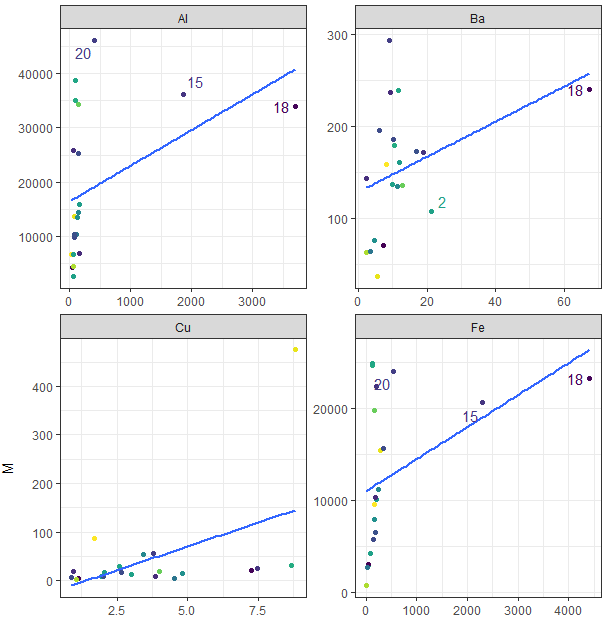I am studying the relationship between the concentration of metals in organisms (Y axis in the image) and the environment (X axis). The regressions are not very good due to some outliers, and I want to prove this by doing regression models with and without the outliers.
My problem is: how do I determine what values are outliers? I can see it very clearly in the graphs, but I've tried different methods and none seemed to work. I've tried detecting bivariate outliers, but it assumes values are clustered and not in a line. I also tried to use the cook distance, but when there are a few clustered outliers it doens't work either.
What approach could I use?

